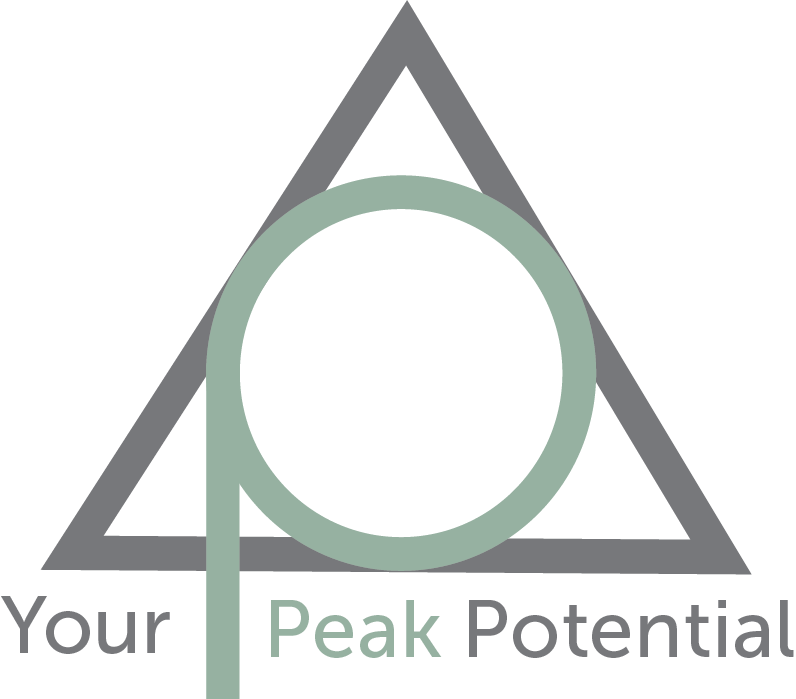5 reasons why you get injured even though you are fit & active

Are you having regular massages, physio or time off resting to manage painful muscles and joints?
Do you feel frustrated by injury after injury, just manage to get one fixed and another one comes along?
When we get these types of pain, often they start small, as a niggle then either, the pain gets worse or it spreads so you end up with mutiple areas of discomfort and pain. Most of the time you will be told there is no specific reason or cause or told it is simply wear and tear.
When I work with someone they are generally going over and over it in their head, wracking their brains as to what they have done that’s caused the problem. But all too often they are looking in the wrong places.
I hear these myths repeated all the time
- It’s just my age
- Running is bad for your knees
- Injury is just a normal part of training
These are not the reason you are in pain.
Let's look at 5 real reasons you get injured
#1 Tight Muscles
I know you are thinking….. Really! Heard that before…. but stick with me here.
We have been conditioned to think that tight muscles are normal. But it’s simply not true. Not the temporary tightness after exercise, that eases over 1 or 2 days. I mean the muscles that are tight when you get up and are tight all day. Chronic tightness. The tricky thing here is I work with lots of people who are chronically tight but don’t feel it. The shortened state of the muscles has become normal for them so they do not notice tight sensations in everyday life. When I ask them to stretch they feel it then!
It’s easy to think – well it doesn’t matter then, I am getting away with it.
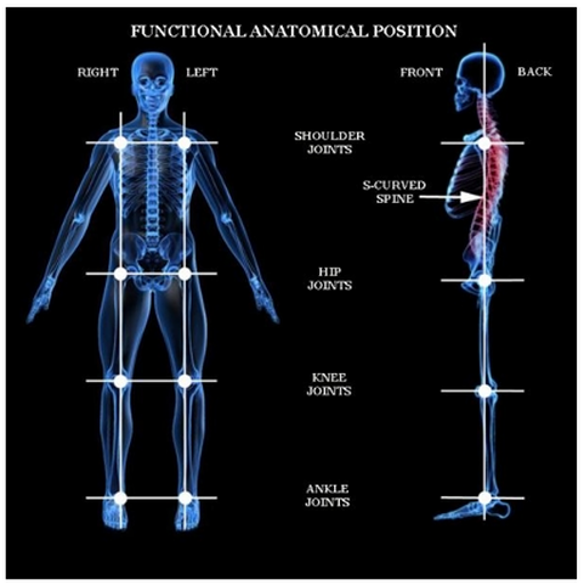
Today is one thing, but tight muscles will cause problems in time. A tight muscle doesn’t work in isolation so there are knock on effects. Ignoring this is setting up the conditions for injuries in the next months or years. And limiting your athletic performance.
Why tight muscles lead to injury
- Tight muscles are contracted and over-working even at rest. That in itself can cause discomfort and pain.
- They can’t function normally and are more likely to strain or tear.
- Tight muscles pull on joints causing pain and impingements.
- Tight muscles will reduce your range of movement. So other muscles will have to work in ways they were never intended.
It is far easier to do something about tight muscles before they reach the pain or injury stage.
#2 Wear & tear
Why do muscles become short, tight and overworked?
Contrary to popular thought, they don’t celebrate another birthday in this way. It is a sign of imbalances.
Muscles don’t work alone, they work with other muscles and bones to create movement. Where there is a short, over worked muscle there will be an associated underworking muscle. This all changes how we use our body to move. For example, a runner whose hip, quad and ankle are tight cannot extend fully in their stride. Often their lower back will arch instead, causing the lower back muscles to overwork.
How much wear and tear we experience depends on HOW we move.
When we move efficiently in harmony with the body we have limited wear and tear. Imbalances mean we move inefficiently. Not only does it make moving harder than it needs to be, it speeds up wear and tear. Muscles are under more pressure, joints move in ways they were not intended.

It is this wear and tear that is causing problems.
Re-learning to move efficiently, re-training our body will massively reduce and even reverse this excess wear and tear.
It is easier than you think to do this.
Like a hammer chipping away at your joints and muscles
Imagine a little hammer tapping away on your bones and muscles, all day. Each tap is not enough to do damage but overtime, 60 taps a minute, 3600 taps every hour etc wears away until eventually something snaps. This is what is happening in your body when we move inefficiently.

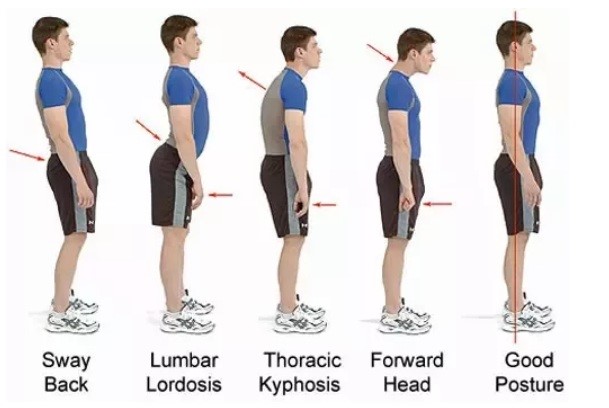
Join our mailing list. Receive tips, tricks & useful info and start to build a better body.
#3 Muscular Imbalances
The same way tight muscles are common, muscular imbalances are now all too common. Common does not mean they are normal or inevitable. They happen because of how we use, or rather misuse our body, without really knowing. Simple changes can make big differences.
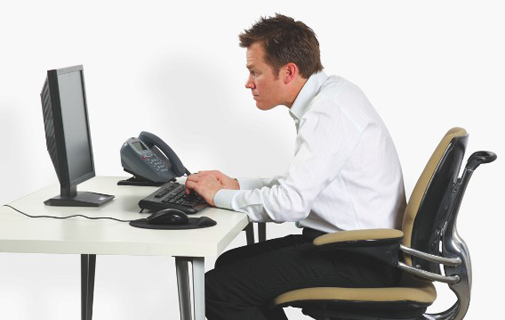
“Change your posture – change your life”
Dee Nichol-Williams
Common misuse adaptations
We all sit for long periods of time. From sitting at desks, in cars, on sofas, at computers, on bikes. Most of that time we slouch. Whilst there is nothing wrong with slouching – doing the same thing for hours and hours a week / month / year changes the body.
Our shoulders round, chest falls and head moves forwards. When we sit like this a lot, the extensor muscles in the back get loose and we lose the ability to extend our torso fully. The chest muscles get short and tight. The shoulder blades change position, moving away from the spine.The spine becomes less flexible, rotation becomes more difficult so the shoulders overwork.
These changes are physical.
It can cause back pain, wear and tear in spine structures, shoulder impingements, frozen shoulder. It can even cause a build up on tissue at the back of the neck so you get a bulge or lump called a dowagers hump. Sitting up straight briefly will not fix it.
The ony way to resolve this is to retrain the muscles to work in the correct way.
No two lives are the same, so no two bodies adapt in the same way. There are similarities and common changes but the detail for each person will be different
#4 Previous Injury
Research tells us…
- If you have 1 injury you are twice as likely to get another in the short to mid term.
- If you get a lower back or hip injury you are 72% likely to get a shoulder or neck injury within 5 years.
Why is that?
Part of the issue is how the body compensates for that injury. You will avoid moving in certain ways to reduce pain and prevent further damage. These compensation patterns get set into the nervous system as the new “norm”. So once you are out of pain you will not necessarily go back to normal movement patterns. SO more wear and tear. It is a cycle.
Pain relief is NOT pain resolution
Traditional treatments focus only on the symptom – relieving the pain. But symptoms are not the root cause they are simply the sign of the problem. To fix the problem for good you need to address the cause, which may be elsewhere in the body. Whilst pain relief is important, it is only part of rfull rehab. For example, knee pain is often driven by what is happening at the feet or the hips. If we do not address the cause then the problme has not gone away and will likely create other symptoms later on. Failing to correct compensation patterns will not get rid of the wear and tear.
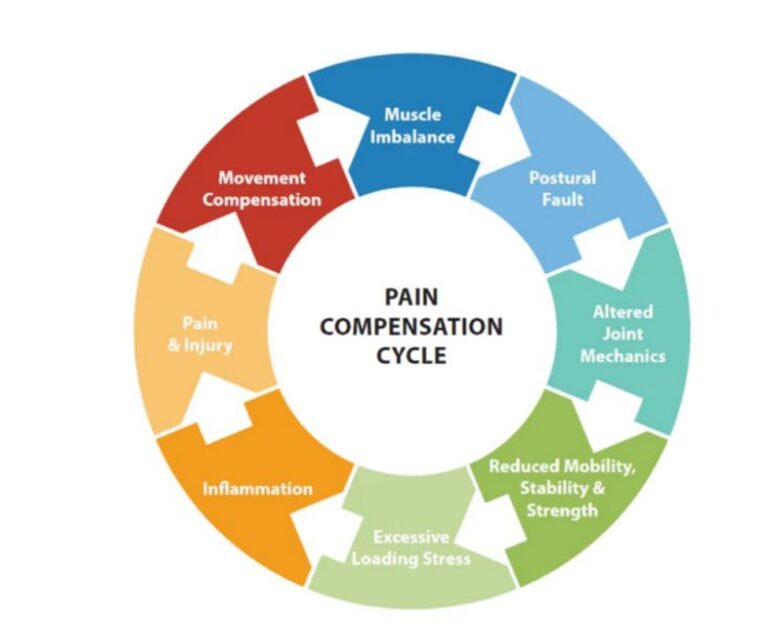
Where are you in this cycle?
#5 Exercise, choice, technique & training
Exercising and training with imbalances and common dysfunctions like
- kyphosis (rounding of the upper spine),
- “flat” feet (all to often weak feet,
- uneven pelvic tilt,
- tight muscles
is a major problem. Without knowing it, all your hard work are doing to build a better body can be super-sizing that excess wear and tear with reps and sets or miles.
Remember the hammer, tapping away through the day? Adding reps is speeding up that hammer and increasing the force. It will send you down the path to pain and injury quicker.
Even if you are aware of good technique, the changes in your body will prevent you being able to realise them where you have movement limitations and compensations.
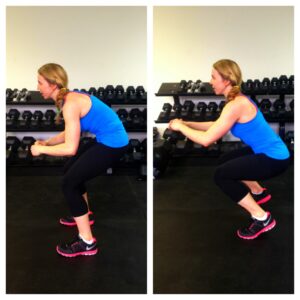

Why do other people get away without injuries?
Why do some people get away with poor posture, sitting, exercise pressure when others seem to get injury after. There will be a number of reasons. Your body can take a lot of abuse and adapt and as long as it has the ability to recover. It will get by, even if it is not able to work at it’s best.
Everyone’s tipping point is different. Once you add enough pressure and the body cannot recover then the niggles start. Simply resting is not rehab. The inflammation and pain may reduce as you remove pressure, but the root cause is still there. Chipping away. The pain may come back or due to compensations it can spring up somewhere else.
The good news
All this is fixable. Your next injury can be the best thing that happens to you. If you let it be.
Choosing to start the process to rebuild your resilient, stable, efficient body will be the best thing for your comfort, health, performance and longevity. It may take a little time but the pay back will be huge. Allowing you to enjoy all the sports and activities you love for the long term.
Want to know more? Join our mailing list. Receive tips,tricks and useful info so you can get started building a better body.

